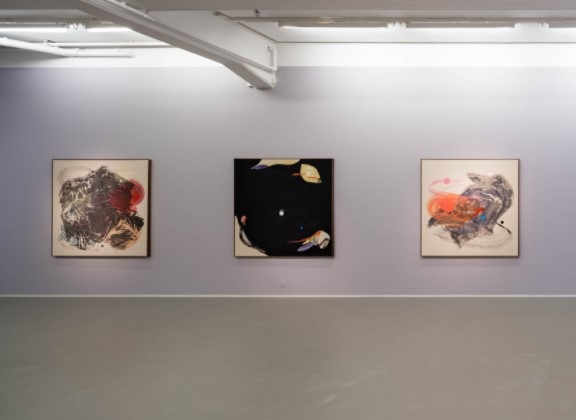As a young painter, Sandström started out in the late 90’s painting large-scale uninhabited landscapes with moons depicting a sense of scale and distance as well as indicating a passage of time. Those paintings were stemming out of a desire for a re-direction towards somewhere beyond her immediate self. These earlier paintings were made prior to the general awareness of the intensity of the climate crisis, prior to the new materialist writings, prior to any general concern with the Anthropocene and as until the other day prior to the agreement on a nuclear final repository. For Sandström, the emotional involvement and concerns regarding her immediate surrounding are still strong, but coming from a different angle, at a different age in a different time.
For the past year, Sandström has painted on raw cotton canvas, in contrast to the smooth polyester canvas she used in her gallery exhibition Dry Maars (2019). Some paintings have their backs presented as a reversed front, becoming faint echoes of themselves. The paintings literally develop during the process, where making imprints by using dyed cloth is an important part – suggesting a process which combines chance and control.
The exhibition also features small frescos adjacent to the paintings on canvas. Fresco is an ancient technique of mural painting where pigment mixed with water when added to a fresh (wet) lime plastered surface result in a chemical reaction where the painting becomes an integral part of the wall. The medium of fresco implies a certain level of permanence through its structural aspects whereas the paintings on canvas are more transient. Through these different techniques, Sigrid Sandström is making a material inquiry as to how our understanding of, and experience of, time might differ – something that remains continuously slippery and out of reach, and always at a distance.
The concept of “site” has always been a concern in Sigrid Sandström’s working process, a search for a destination, for something to appear in order to locate the painting; the place that completes the painting. The depicted places have become more directly tied to the process of the making, unfolding through the sedimentations of the paint, the traces and cracks becoming visual time keys. The word residue– both physical and emotional – seems apt to describe the process.




